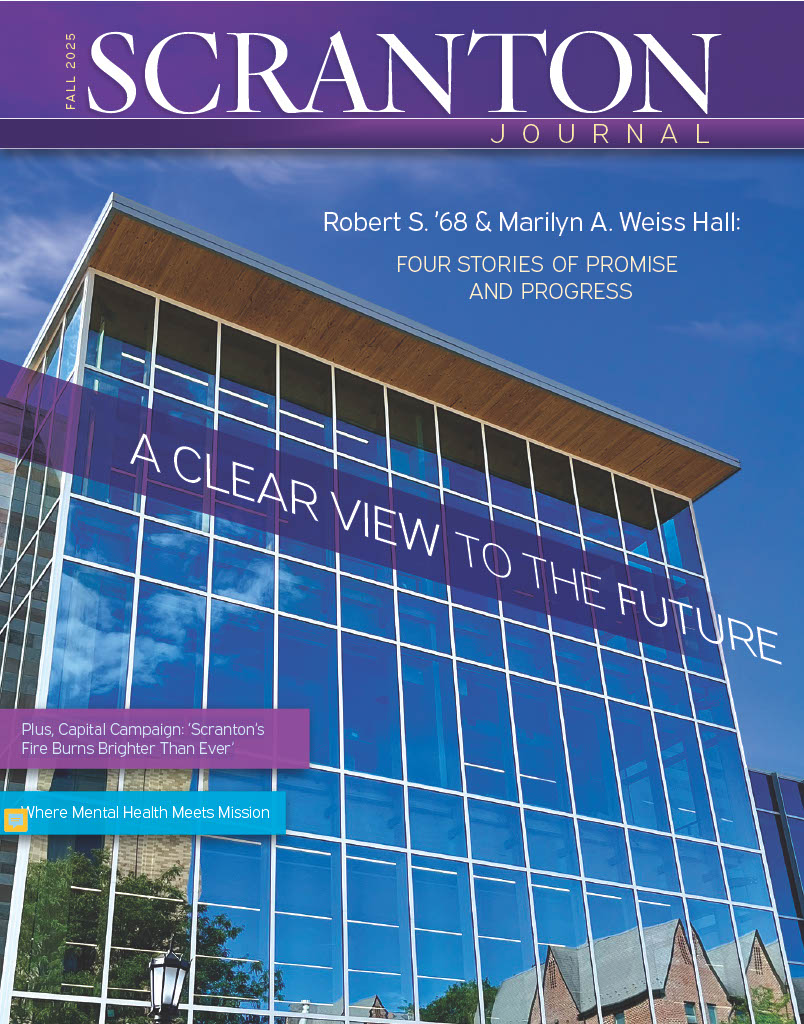This fall, the University community and its Scranton partners have taken several important steps in addressing racism and discrimination. After nationwide protests followed the killing of George Floyd and others, University President Scott R. Pilarz, S.J., called for Actions to Combat Racism and Discrimination to create a more “welcoming and supportive community” at Scranton.
Since then, dozens of discussions and trainings have been offered to students, faculty and staff on the topic, mostly via Zoom, and members of the University are also “challenged to deepen their own understanding,” of the issues.

“Talking about racism is difficult, but with curiosity, knowledge and empathy, we can listen, learn and work for change,” said Cathy Ann Hardaway, president of the Greater Scranton Martin Luther King Commission, in “Talking about Racism: A Community Conversation” in October.
New and improved University policies and plans – including the Strategic Plan, which has an embedded goal “demanding that diversity be a priority” — are helping to alter the landscape, and discussions on race and discrimination bring about new questions. The University Planning Committee recently assembled a group of UPC, CDI and other University members to commence work on a Diversity, Equity and Inclusion specific strategic plan with a goal of completing a plan by winter 2021.
Meanwhile, the Council for Diversity and Inclusion (CDI) is “listening.” The CDI’s mission is to consider recommendations submitted by the University and local community members “regarding inclusive and diverse approaches, programs, practices, activities and any other goals the Council believes are necessary to create an inclusive University for students, faculty and staff.” In August, CDI sent a list of recommendations to the Cabinet. The University committed to moving forward on many of the recommendations, which can be found on the University’s new EDI website.
Seeking out and listening to suggestions ensures that more people are being heard and helps the CDI to understand the most pressing issues on and around campus. In fact, the CDI recently conducted an anonymous survey to find out more about student, faculty and staff experiences.
"I want everyone to see themselves represented here in some way and to feel welcomed and safe regardless of their background.” - Myriam Moise ’22
Myriam Moise ’22, a member of the CDI, said she hopes not only to listen but to educate.
“I feel that we can further help the University by continuing the conversation. We can talk to students about what they need and, for example, promote the Cross Cultural Centers (The Jane Kopas Women’s Center and Multicultural Center), because those are amazing resources that not everyone knows about,” said Moise.
Educating the University community about available resources is important, and because there are more direct conversations about race, there is more understanding of policies. In a recent interview with Student Government, Elizabeth M. Garcia, Esq., executive director of The Office of Equity & Diversity and special assistant to the president, outlined how students can report discrimination.
“It’s really important that people bring issues to our attention,” said Garcia. “We take everything that comes to our office seriously.”
It’s not just departments and offices that are taking steps toward a more inclusive campus. Clubs have begun to have important discussions about race during this time as well, including the new Scranton Student Association of the Philippines and the Black Student Union (BSU), which plans to start a networking group with alumni, “so that black students can have that support once they leave campus,” said BSU member Tiannah Adams ’22.
“Our goals for this year are just to create a community amongst each other,” said Ravenne Cooper ’22, BSU member, “and to advocate for issues that we think are really important.”
The United Cultures Organization (with the assistance of the Multicultural Center), of which Moise is vice president, recently helped to get a more diverse array of hair and skin products in the Mulberry Street P.O.D.
“We had asked for some more Black representation in the P.O.D., because they didn’t have any hair or skin products that worked with our needs,” she said. “It’s small things like this that can make campus feel more inclusive for students of color, and that’s why I do it. I want everyone to see themselves represented here in some way and to feel welcomed and safe regardless of their background.”


